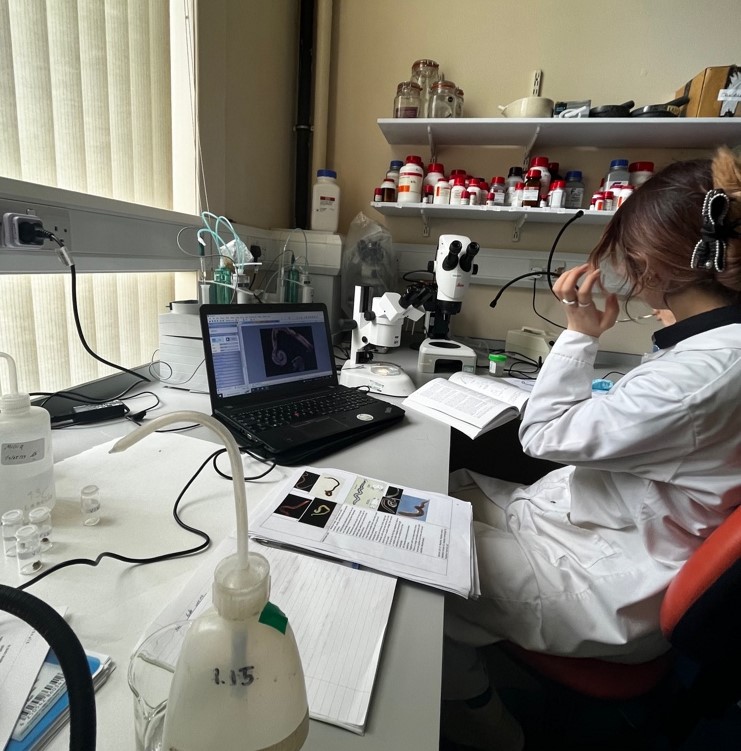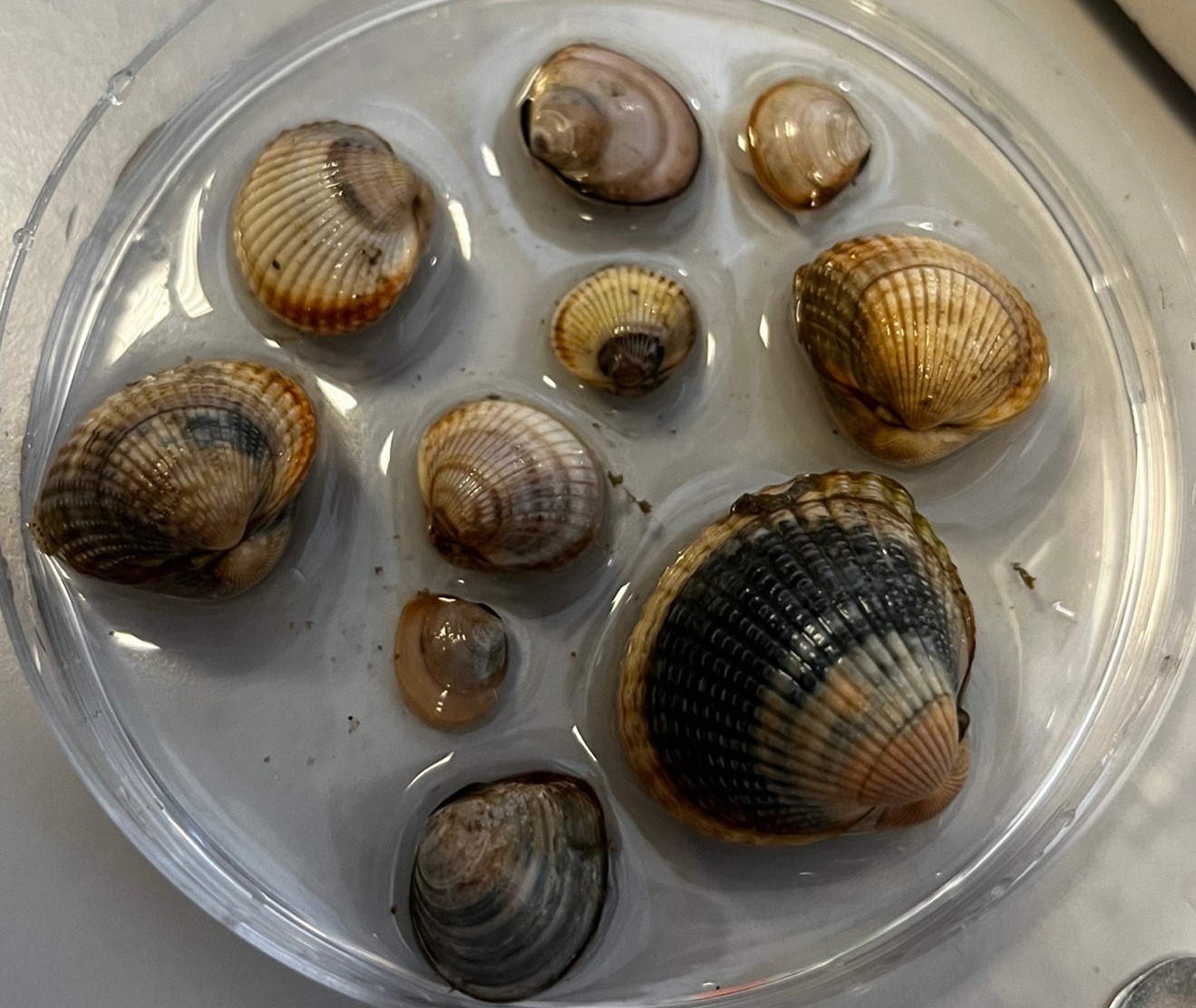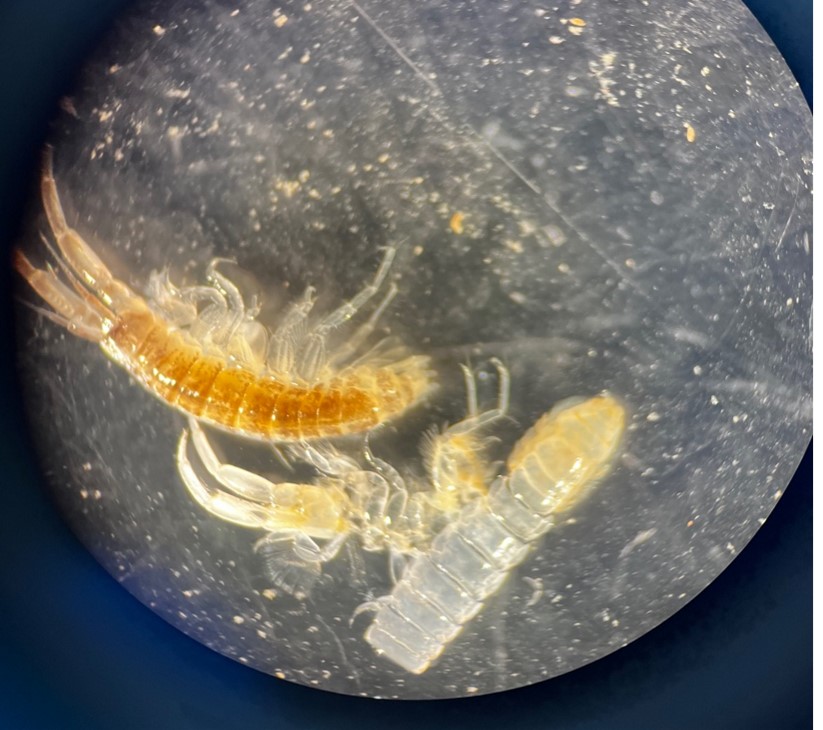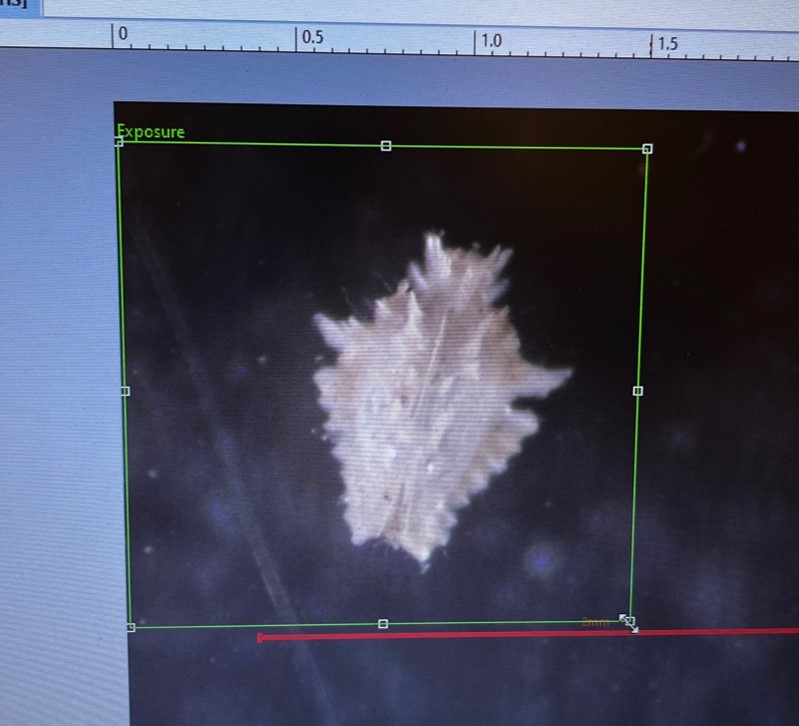Author: Renata Issakhanova, BEng Mechanical Engineering, University of Aberdeen
Project: Trophic structure and functioning of the macrofauna community in Loch Creran investigated via dual stable isotope labelling experiments
Supervisor: Ursula Witte & Anton Kuech, School of Biological Sciences, University of Aberdeen.
As a first-year mechanical engineering student, my expertise in environmental research was restricted to lab-related assignments within two optional chemistry courses that I took during that year. However, marine biology was something that I was excited about dating back to middle school and a compelling career path that I was interested in exploring. Due to my current academic program being distantly related to environmental sciences, I lacked practical experience in the field and when I got notified by the chemistry department at my university about the Quadrat research placement scheme, I instantly recognized this opportunity to be very interesting. I was even more delighted when I came across the topic that I was particularly curious about and made my ultimate decision to apply.

I was very lucky to have been chosen to participate in this research alongside the amazing team of two supervisors – Anton and Ursula, as well as another REP student – Emily. The project goal was to investigate the trophic arrangement of different macrofaunal species in Loch Creran from their feeding relationship within the ecological system. The results were planned to be obtained by the dual stable isotope labelling involving carbon-13 and nitrogen-15. This experiment included implementing the isotopes in the environment of Loch Creran and analysing the hierarchical arrangements upon comparison with the original signatures of the macrofauna.
Our work as research interns focused on a broad set of tasks relating to the analysis of collected core samples via assortment, identification, and preparation for SIA. In the first few weeks of my placement, I and another REP student had the opportunity to go on a field trip to collect some samples from the Ythan estuary, located just north of Aberdeen. I particularly enjoyed taking close-up pictures and identifying taxonomic levels of the found aquatic species, despite it being confusing and difficult at times due to the complexities of different types of polychaetes and gastropods. Another part of the sample processing included drying up, acidification (if needed to dissolve any hard shells), weighing, and packing the ground organic matter powder into tin balls no bigger than 1 cm. I found this part of the experiment to be the most challenging due to how precise and stable my movements needed to be to satisfy the weight requirements and avoid sample contamination.
Ultimately, the bulk of the internship period was centered around processing cores from Loch Crenan, which the team acquired prior to my involvement. The approach was very similar to the management of the Ythan samples, additionally involving manual extraction, rinsing, and extensive search of any fauna in the samples under a microscope.

Due to the research extending beyond the period of my 10-week internship, I did not have an opportunity to take a look at the isotope-labeling data for Loch Crenan, but I hope to keep in touch with my supervisors and stay up to date with the results of the project.
I am truly grateful for such an incredible opportunity to partake in this scheme; I gained not just academically beneficial skills but also met incredibly competent people who kindly guided me and from whom I was able to learn over the duration of the placement. Through the weekly meetings that we had with people from other projects and the various lab and field work, I received practical experience in environmental research and learned very insightful information that definitely made me more curious about pursuing a career in this industry. My experience during this program was invaluable and nonetheless, very fun 🙂























































